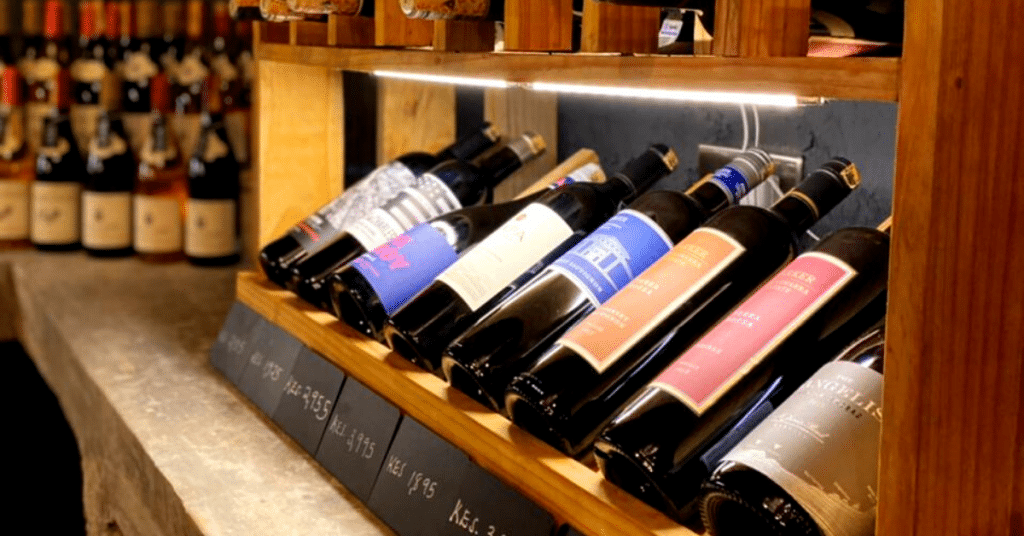What factors affect the price and quality of wine?

Have you ever wondered what makes one bottle of wine more expensive than another, very similar bottle of wine? Would you like to be able to make a more informed decision next time you buy a bottle of wine? Here we’ll examine what factors affect the price and quality of wine, and hopefully demystify wine shopping at the same time.
What makes one wine different from another?
Let’s say you enjoy a wine at a dinner, and you think “I must buy myself a bottle of that!” You head to your local wine shop or online store but you find they don’t sell the exact same bottle. However they do have a wide range of other wines made from the same grape. To make matters more confusing, you notice that two bottles of your favourite wine made by the same winery have different labels and different prices. Assuming you’re brave and will choose a bottle anyway, how do you tell whether you’re buying a good quality wine? Is price the only factor or is there more to it?
It is helpful to look at the main aspects of wine production which influence the style and characteristics of the finished product. These aspects broadly fall under the categories of “place” and “technique”.
Where the wine comes from
You may have heard the term “terroir” in relation to wine. This is a French word meaning soil or region (pronounced terr-wah). In wine production, terroir describes the unique properties of a region that shape the style of the wine produced there and which distinguish it from another region’s wine. The biggest contributors are climate and soil, but aspect, elevation and attendant microorganisms also play a part.
To explain further, different types of grape prefer different growing conditions. So, for example, riesling prefers colder climates to warmer regions. The best quality rieslings are fresh, light and acidic; if you plant riesling in warmer climates the sugars develop sooner, leading to earlier harvest. This means many of the characteristic flavours have not yet had enough time to emerge; and also more sugar means more alcohol, so a heavier wine rather than the lighter style characteristic of riesling.
In addition, the soil is where the vines get their nutrients from; but soil type can also contribute significantly to the flavour of the wine. This has been seen time and again where identical vines planted on neighbouring vineyards with different soil types produce quite different wines, all other factors being equal.
So it’s clear that where the wine comes from affects the taste and quality of the wine through its terroir. In general, land where conditions are ideal for growing grapes will be more valuable than land in less optimal areas; this value will filter through to the finished product. Where the wine comes from also affects its price through the cost of local labour and taxes; and any currency exchange factors that may apply.
Vintage
The amount of sunlight and rainfall the vines receive also influences the growth of the grapes. The weather experienced in a growing season is the major factor affecting the quality of the harvest for that year. The year of harvest is known as the vintage. For example, extreme weather such as particularly cold conditions in spring can “burn” the vines; or unusually wet conditions can encourage growth of mildew. This is related to place, of course, because although the weather may have been terrible in one region in a particular year, another region may have experienced wonderful growing conditions in the same year.
Vintage is a factor that affects quality and price of wine through the flavours developed in the grapes; for example, if there is too much rain, this can result in more grapes with less flavour, resulting in lower quality wine. More intense, desirable flavours mean higher quality wine, attracting a better price for the grape growers.
How the vineyard is managed
How the vineyard is managed – the techniques and traditions of growing and harvesting the grapes – is known as viniculture. The viniculturist decides how to train and prune the vines, whether to irrigate, whether to use pesticides, when and how harvesting should take place (mechanised or by hand), and so on. These decisions affect both the quality of the grapes produced and the cost of producing them.
Depending on whether a premium or everyday wine is being produced, the viniculturist will aim for a low or high yield. For a premium wine, a portion of the bunches of grapes will be cut off; this forces the vines to put all their effort into the remaining bunches, resulting in a lower yield with more intensely flavoured grapes, which are more valuable.
Organic wines tend to be more expensive because no chemical sprays are used, leaving the vines at the mercy of pests and diseases which can lower yields. They are also generally harvested by hand which is labour intensive and can affect production costs.
How the wine is made and bottled
The process of turning grapes into wine is known as vinification. The winemaker selects the best fruit to make the premium wines, and uses the rest for the “everyday” wines. This is why you may find two wines from the same winery, made from the same grape, labelled and priced differently.
Everyday drinking wines are designed to suit a wide range of consumers. For premium wines, the winemaker will use a more complex process to create the wine than for the everyday wine. Premium wines are often matured for longer, sometimes by aging in oak barrels, which allows the wine to develop more complex flavours; whereas everyday wines tend to be young, fresh, vibrant and easy to drink.
So the value of the harvested grapes, plus the equipment and techniques employed by the winemaker – even the type of bottles and closures used – all factor in to affect the quality and price of the finished wine.
Is price the best indicator of quality?
Price is one indicator, but by no means the only one, of wine quality; it can really only be used when comparing like for like. So when comparing two wines using the same grape made by the same winery, the more expensive of the two will be the premium wine. However, your personal preference may steer you towards the lower priced wine – you will only find out by trying both. Similarly, you can compare similar wines from the same vintage and find that one is more expensive simply because the winery has a good reputation; this means it can charge a premium price, not that the wine from the unknown winery is not excellent.
To conclude, the main factors affecting the quality and price of wine are where the grapes come from, the year they were grown in, the growing practices of the vineyard, and the techniques used by the winemaker. When shopping for wine, it is helpful to read the wine labels as they give you some of this information; but at the end of the day tasting the wines is the best way to decide what you like best. However, it is usually not possible to try before you buy; in which case the advice of a reputable wine merchant such as TWB Cellar Limited is invaluable. We list recommended wines on our website and in our weekly e-newsletter which are taste tested by our sommelier and which we feel present good value for money. Happy shopping!

